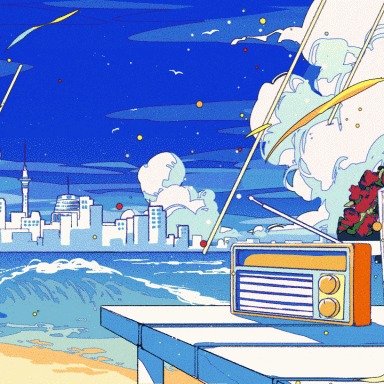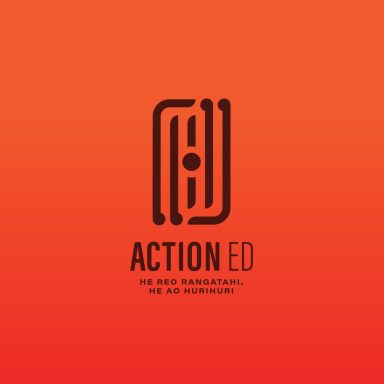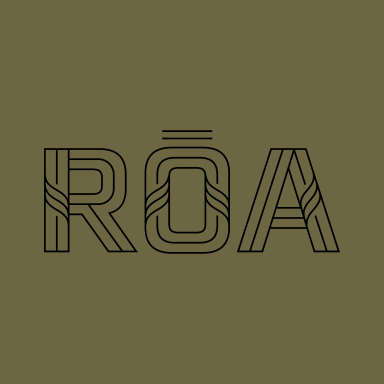Māori troublemakers disrupting design for good.
By Karl Wixon. Ngāi Tahu, Kāti Māmoe, Waitaha, Moriori, Ngāti Toa Rangatira, Pākehā. Co-Chair Ngā Aho Inc. Kaiārahi & Managing Director ARAHIA pathfinders.
For June & July we are focusing on Design & Te Ao Māori on the Design Assembly website – featuring interviews with Māori designers, project features spotlighting their work & design processes, to thought leadership articles that inspire and challenge the Aotearoa NZ Design community. Check out more from the series below.
#IndigiJedi
There is a fast-growing number of Indigenous Design Jedi changing the world one design project at a time in the interests of designing better futures for our mokopuna (descendents).
They tend to be non-compliant, they seem to stray from their disciplinary boundaries – frequently, they always want more time for engagement than deadlines and budgets allow, they prattle on about protecting earth-mother and sky-father while you’re trying to have a conversation about concrete foundations and waste-water, they seem to answer questions with stories, you want to pop in for a quick client meeting but they insist you stop on the way to pick up some kai, you kindly ask them to simply add some indigenous patterns on the project and they refuse and start talking about Treaties and cultural and intellectual property, they insist on involving people in the design process who are not designers, and they have a propensity to gather – who knows what they’re talking about and up to.
Some might view them as trouble-makers, but they are simply doing what it takes to indigenise design. Sometimes it requires challenging the status quo and kicking up a bit of dust.
Indigenising Design
Last month Ngā Aho Inc, our national network of Māori DesignersTM (Trouble-Makers), were awarded the Royal Architectural Institute of Canada (RAIC) International Award for our “Profound impact on indigenous Architecture”. The award was picked up in Vancouver by chief trouble-maker Desna Whaanga-Schollum (Rongomaiwahine, Ngāti Kahungunu, Pāhauwera, Ngāi Tahu Matawhaiti) on behalf of Ngā Aho. Desna has been connecting with and firing up other indigenous design trouble-makers around the world for over a decade. She was bestowed an honorary fellowship for her years of stubborn grit and determination weaving together our indigenous creative kin around the Pacific Rim through exchange forums and joint publication. Desna was accompanied by Ngā Aho Co-chair and disciplinary boundary hopper, Landscape Architect, Artist and Musician, Josephine Clarke (Ngāti Porou, Te Whānau-ā-Apanui, Te Rarawa, Te Aupōuri, Ngāti Kahu, Ngāti Rangi ki Ngāwhā), as well as Carin Wilson (Ngāti Awa, Tūhourangi) a member of our Ngā Aho Kāhui Whetu (veteran trouble-makers) and first troublesome Māori President of the Designers Institute of NZ (1991-93) where he was raising questions about designers responsibility to Te Tiriti o Waitangi back in the early 1990s – something that fired up my trouble-making gene as a fresh ID grad. Here they were, in Vancouver, a group of non-Architects who clearly did not know their place, picking up an Architecture award.
Fortunately, also in attendance at the RAIC Award Ceremony in Vancouver was a Ngā Aho founding member, and proper Architect, Huia Reriti (Ngāi Tahu) who the following week ascended to President of Te Kāhui Whaihanga New Zealand Institue of Architects, their first Māori President. Add to this the current President of Tuia Pito Ora NZ Institute of Landscape Architects, Debbie Tikao (Ngāti Pākehā and First Nation Cherokee), former GM of Matapopore Trust who were responsible for the Māori design transformation of post-quake Ōtautahi / Christchurch, Lara Taylor (Ngāi Tahu, Tūhourangi, Ngāti Tūwharetoa, Ngāti Pāhauwera and Kāi Tahu ki Murihiku) Chair of Māori Planners Forum Papa Pounamu of the NZ Planning Institute and Anzac Tasker (Te Whānau-ā-Apanui, Te Arawa, Ngāpuhi) current Co-President of the Designers Institute of NZ who has recently moved on from an illustrious nine year stint at Designworks to pursue his own kaupapa Māori design practice…
Well, you get the picture…but just in case you don’t…
We are witnessing an indigenous led design revolution.
WTF? you say, “when and how did that happen??”.
Let me explain the whakapapa, well at least a very recent part of the whakapapa, the last 100 years.
The post-WWII change in New Zealand arts education led by Gordon Tovey from 1946 into the 1960’s, following on the heels of Sir Apirana Ngata’s earlier drive from the 1920s to rebuild Māori Arts practice and education, catalysed a Māori Arts Movement leading to a new generation and new genre of Māori artists and arts. Many students of the era went on to train at the Elam School of Fine Arts and became the self-described ‘Elam School Group’, a generation of contemporary Māori arts pioneers and educators; such as Arnold Manaaki Wilson, Fred Graham, Ralph Hotere, Sandy Adsett, Kataraina Mataira, Cliff Whiting, John Bevan Ford, Cath Brown, Selwyn Muru and Para Matchitt. They and their kindred creative spirits led a Māori Arts movement that in 1973 saw establishment of Ngā Puna Waihanga, the Māori Artists and Writers Guild that had close links to Ngā Tamatoa through members like Rawiri Paratene, Tame Iti and Kura Te Waru Rewiri, collectively leading a Māori cultural, creative and political renaissance through the 1970s-1980s.
The same year Tovey took up his education office in 1946, John Scott (Taranaki, Te Arawa) enrolled at the School of Architecture at Auckland University College, a programme he never completed, but John went on to become arguably New Zealand’s most notable Architectural Designer with Futuna Chapel widely considered his finest work and our finest example of NZ Architecture. Wiremu (Bill) Royal (Ngāti Raukawa, Ngāti Hine, Ngāti Kōpaki, Ngāpuhi) graduated in 1960, considered to be the first Māori Architectural graduate. Many more followed, including the late Rewi Thompson (Ngāti Porou, Ngāti Raukawa), Tere Insley (Te Whānau-a-Apanui), Mike Barnes (Ngāti Tūwharetoa), George Clarke (Ngāti Porou, Te Whānau-ā-Apanui, Te Rarawa, Te Aupōuri, Ngāti Kahu, Ngāti Rangi ki Ngāwhā) and Perry Royal (son of Bill), a group of Māori Architects who both competed and collaborated together through the 1980-90s alongside many of the Elam School Group. Ngā Aho founding member Architects included Rau Hoskins (Ngāpuhi), Huia Reriti (Ngāi Tahu) and Jacob Scott (son of John), who learned under the scrutiny of his design perfectionist father, and whose daughter Hana continues the Scott whānau Architectural legacy into a third generation.
Ngā Aho, formally founded in 2009 at Apumoana Marae, emerged from this whakapapa and deliberately wove together the many strands (ngā aho) of Art, Design, Landscape and Architecture, guided by some of these pioneers, a natural extension of their legacy and cross-disciplinary collaborative practice. Ngā Aho was convened under a collective kaupapa of ‘Designing Māori Futures’ with a focus on design for good through servitude and collective impact as well as raising awareness through education and opportunities for gathering, learning and exchange.
As Ngā Aho member Rau Hoskins describes; Ngā Aho are collectively seeking to build bridges between those within our culture that represent remnant tohunga traditions and the many of us who have been and continue to be educated in colonial design institutions. That our endeavours may lead Māori (and Moananui / the wider Pacific) design and architecture tauira (students) and graduates to more readily connect with and be nurtured by our ancient knowledge systems and become ‘whole practitioners’. Furthermore, that we may heal and rebuild the connections with those knowledge holders who have been progressively excluded from their original roles as conceptualisers and shapers of our environments.
Ngā Aho’s impacts have been wide reaching, whether it be the early work we did securing a contract to be exclusive providers of Māori Design for Rugby World Cup 2011; or development of the the Te Aranga Māori Cultural Landscape Strategy evident in the Auckland Design Manual ‘Te Aranga Principles’ adopted in many other regions, including Tauranga, now being taught to Architecture students; or convening Ngāi Tahu designers, Architects, Landscape Architects and Artists to respond to the rebuild of Ōtautahi / Christchurch leading to development of the Māori Urban Design Guide, cultural narratives and commissions for the city rebuild – changing the face of Ōtautahi; or members input into national policy statements and practice guides across Architecture and Landscape Architecture, or establishment of the Ngā Aho Awards within the Best Awards programme (now Toitanga), or the emergence of ‘whakapapa centred design’ as an alternate model and approach to human centred design and design thinking, for co-design and design for social innovation.
A quiet (mostly) revolution has been occurring one conversation, one document and one project at a time.
So what is this indigenous design movement all about?
Put simply, our country’s prevailing ‘blueprint’ for design education and practice is a colonial one, not an indigenous one. For Māori, ‘fitting in’ with this blueprint is having to fit into a culture that clashes with indigenous values, worldviews and ways of relating to people, place and planet.
So, to redesign AotearoaNZ design and design education, we need to acknowledge and understand these colonial roots and the values and beliefs that underpin that:
- That the world is a place of competition within which there are winners and losers and your objective is to be the winner (think design awards and market competition).
- Colonisation requires positioning yourself above and as having power and influence over others (think design egos and the role of creative director).
- Other countries, their cultures and resources are there for the taking and exploitation for your own gain (think market capture, cultural appropriation, resource depletion and mass consumerism).
- Possession is nine-tenths of the law (think intellectual property and cultural appropriation).
- As a ‘creative’ we own the rights of our creativity (think of the inherent rights of a photographer to the images they capture, irrespective of subject or consent).
- He who holds the pen controls the narrative and power to define (think marketing 101).
- Colonisers are racially superior to, and therefore can justifiably suppress, the colonised (think whose design history and aesthetic lexicon dominated your design education and perhaps practice).
These colonial values and practices that perpetuate them have caused more harm than good on a global scale. We are overdue for change and indigenous world views and values provide a much needed antidote, one that design can embrace, if we are to make a net positive contribution for good.
Moving to an indigenous design paradigm
Indigenising design requires challenging these fundamental colonial values and beliefs from an indigenous paradigm that puts planet before people before profit, a paradigm that positions designer as humble servant within a cultural ecosystem, not a demi-god in a design ego-system, a culture that values the collective over the individual and where design is purposeful, communicative and transformative – where it has a role to play in the reclamation, revitalistion and celebration of culture and identity, addressing inequality, and the restoration of balance between people and planet.
Māori design is whakapapa centred, that is to say it functions in a place based inter-generational paradigm responsive to local environment, people, knowledge, needs and systems. Whakapapa can literally refer to layers on top of earth (papa), including layering of ancestors, layering of history and stories, activated through our connections and expressed through physical manifestation by design.
Māori design is pluralistic and inherently cross-disciplinary, it does not separate people from the natural world like ‘human centred design’ does, it focuses on intergenerational impacts and outcomes, rather than design outputs which should be seen as a means to an end, not an end.
Our relationship with the natural world is one of kinship, reverence and deference, not exploitation.
Commercial outcomes take a back seat to social, cultural and environmental impacts and our worth as Māori designers is measured accordingly.
Increasingly design that is good for people, place, planet, and rich in story is sought by market and commands premium value.
He wero, a challenge.
Every design project is an opportunity to redesign design, so don’t be complacent, challenge yourself to challenge your practice and challenge others, be a good ancestor and Disrupt Design for Good.
Troublemaking is compulsory.
Kia kaha, kia māia, kia manawanui.
Be strong, be courageous, be resolute.
About the author
Bluff born and Heretaunga raised, Karl was raised in the southern Ngāi Tahu tradition of muttonbirding, a customary food gathering practice that takes place annually on remote islands surrounding Rakiura, Stewart island, taking him out of school for two months every year for his other education. Graduating from Industrial Design in 1990, he has worked across nearly every sector of design you can throw a name at from product, to spatial, to architectural, to brand and identity, to experience design, service design, design thinking and design education. He simply identifies as a Māori designer, describing design as a creative discipline for identifying and tackling challenges by conceiving and developing innovative, elegant and future-fit solutions.







